Essential Wind Measurement Devices for Watersports
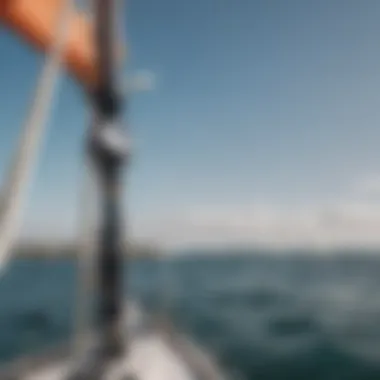
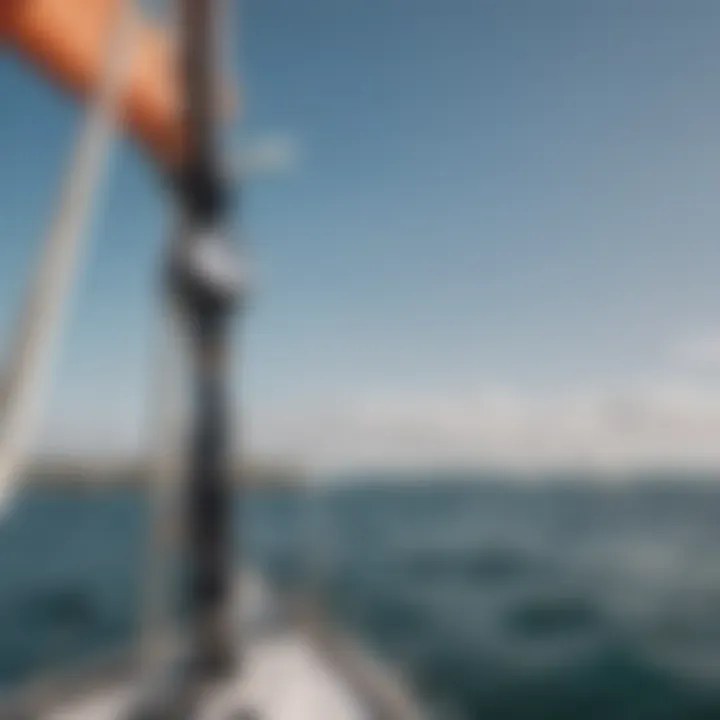
Intro
Understanding how to measure the wind is essential for anyone involved in watersports. Whether you're skimming across the surface of a lake while kiteboarding or navigating the open sea in a sailboat, the wind's speed and direction can make or break your experience. Accurate wind data enhances performance, promotes safety, and ultimately leads to more enjoyable days on the water.
Wind measurement devices come in various shapes and sizes, each designed for specific purposes and climates. From handheld anemometers to more sophisticated weather stations, these tools provide critical insights that can be the difference between a thrilling ride or a perilous push against Mother Nature. This guide explores the different wind measurement instruments, how they operate, and why they matter to you as a watersport enthusiast.
We’ll dive into the techniques and skills necessary for understanding wind dynamics, appropriate gear recommendations, and tips for selecting the right equipment. For those new to watersports or looking to deepen their expertise, having a grasp on wind measurement opens up a world of possibilities in outdoor adventure. Let's unpack this topic step by step.
Prolusion to Wind Measurement
Understanding wind measurement is like having your finger on the pulse of nature when engaging in watersports. For enthusiasts, whether they're sailing, surfing, or kiteboarding, knowing the wind's behavior isn’t just an optional add-on – it’s a critical element to enhance performance and ensure safety. Accurate wind assessment can mean the difference between a smooth ride and a challenging experience on the water.
Importance in Watersports
Wind is arguably one of the most pivotal factors influencing watersports. It dictates everything from the speed of a sailboat to the height a kiteboarder can achieve. Without a proper grasp of wind conditions, athletes risk underestimating the forces at play, leading to unsafe situations. For instance, a kiteboarder jumping in strong, gusty winds may find themselves caught off-guard, risking not only their performance but also their safety.
To put it plainly, understanding wind measurement can improve:
- Performance: Athletes can optimize their techniques based on wind patterns, enhancing speed and maneuverability.
- Safety: By learning to read wind conditions, watersport participants can avoid dangerous winds that could turn a fun day into a risky outing.
- Skill Progression: Gaining insight into wind mechanics helps enthusiasts evolve by allowing them to adjust their strategies and skills to match varying conditions.
Overview of Measurement Devices
Diving deeper into wind measurement devices, these tools act as the eyes and ears of any watersport enthusiast. They come in various forms, each with unique capabilities suited for specific activities and environments.
- Anemometers: These instruments measure wind speed and direction, integral for any sailor who wishes to harness the wind efficiently. From mechanical types with spinning cups to sophisticated digital models that provide real-time data, they cater to varied preferences.
- Wind Vanes: These are crucial for determining the wind's origin. Understanding where the wind is coming from enables better decision-making—like when to turn your sail or adjust your kite.
- Pitot Tubes: Although often associated with aviation, these devices also find their application in watersports to measure wind speed relative to an object in motion, like a boat or a board rider. They help in analyzing changes in wind patterns based on movement.
Each device has its own strengths and weaknesses, making it vital for watersport enthusiasts to choose the right one based on their specific needs.
Types of Wind Measurement Devices
Understanding different types of wind measurement devices is essential for watersport enthusiasts who want to optimize their performance and safety. Each device serves a specialized purpose, and knowing their functionalities can greatly affect how one approaches activities like sailing, surfing, or kiteboarding. This knowledge helps in making informed choices, ensuring that conditions are right for the best experience on the water.
Anemometers
Mechanical Anemometers
Mechanical anemometers operate on a straightforward principle—they use moving parts to measure wind speed. These devices typically consist of cups or blades that rotate in the wind. The key characteristic that stands out is their simplicity. Mechanical anemometers are favored by newcomers due to their low cost and ease of use. However, they may give less precise readings at very low wind speeds, which can be a drawback for performance-oriented athletes. Their reliability lies in their proven history; they've been used for decades, making them a trusted choice for many.
Digital Anemometers
Digital anemometers have become quite popular among sport enthusiasts, mainly due to their accuracy and ease of reading. The key characteristic that elevates these devices is the digital display that conveys wind speed instantaneously in various units, such as miles per hour or knots. A huge advantage of digital anemometers is their ability to log data, providing valuable wind patterns over time which helps athletes plan their activities more effectively. However, they often come with a higher price tag compared to mechanical types, which could be a concern for budget-conscious users.
Ultrasonic Anemometers
Ultrasonic anemometers represent the cutting-edge in wind measurement technology. They measure wind speed based on the time it takes for ultrasonic pulses to travel between sensors. This method eliminates moving parts, making them highly reliable and accurate. Their key advantage is the ability to provide real-time data, including wind direction and turbulence, which can be vital for competitive sailing or kiteboarding. On the flip side, they can be expensive and may require a learning curve for proper interpretation of data—something to consider for those just starting out in watersports.
Wind Vanes
Functionality
Wind vanes are devices that indicate wind direction, a critical factor for anyone on the water. They typically point into the wind, helping users determine how to adjust their sails or boards. The functionality of these devices is not overly complex, yet they provide crucial information that can significantly impact performance. Often seen mounted on boats or masts, wind vanes help keep sailors aware of changing conditions without them having to look around, making them a popular choice for enthusiasts.
Types of Wind Vanes
There are several types of wind vanes available, each designed for specific environments or uses. For instance, basic plastic vanes can work well for small sailboats, while more advanced models, such as the ones with electronic sensors, are tailored for high-performance sailing. The unique feature of electronic wind vanes lies in their integration with other devices, providing continuous updates about changing wind conditions. However, they tend to be less portable and can demand higher maintenance than simpler models, which is something potential users should weigh carefully.
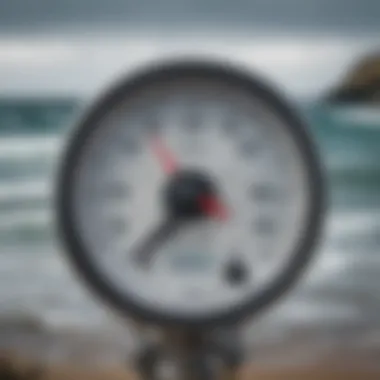
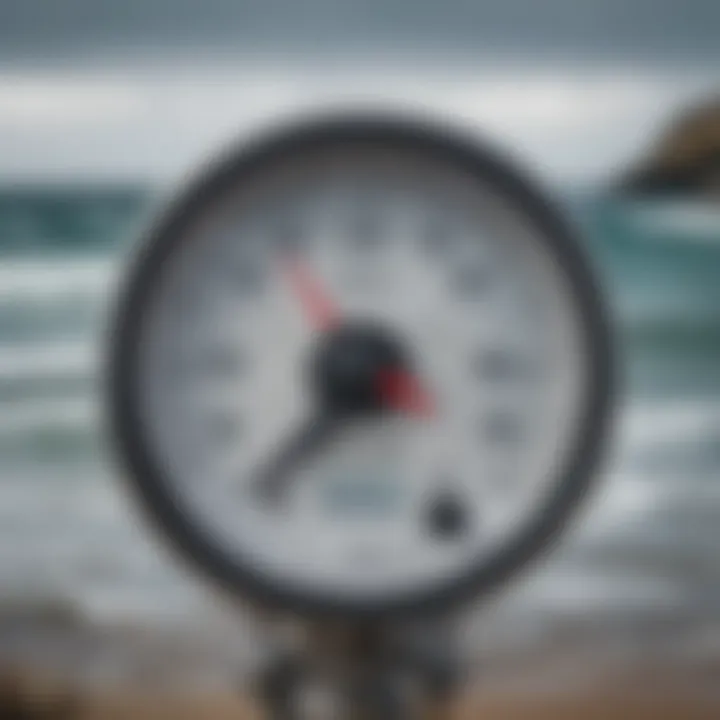
Pitot Tubes
Principle of Operation
Pitot tubes measure wind speeds using fluid dynamics concepts. They consist of a tube with two openings; one faces into the wind, while the other side measures static pressure. The unique aspect of this mechanism is its ability to deliver accurate wind speed data even under turbulent conditions. While effective, the disadvantage is that Pitot tubes can be more sensitive to installation and setup, which makes them less straightforward for amateur watersport enthusiasts.
Applications in Watersports
In watersports, Pitot tubes are primarily used in powerboats and kitesurfing applications. They provide real-time wind speed data that can be critical for optimizing performance. Many advanced setups utilize Pitot tubes connected to onboard data systems for real-time insights. Their unique feature of high accuracy makes them a strong choice for data-driven sports. However, they might not be as versatile or user-friendly for casual enthusiasts who prefer simplicity in measurement devices.
Principles of Wind Measurement
Understanding the principles behind wind measurement is crucial for any watersport enthusiast aiming to harness the power of the elements effectively. From wind surfers to sailors, accurate assessments of wind conditions can make all the difference in performance and safety. This section delves deep into the foundational concepts that underpin how we measure wind, ensuring that enthusiasts can make informed choices and employ the right tools in their endeavors.
Aero-Dynamical Principles
Aero-dynamical principles form the backbone of how wind measurement devices operate. When considering the movement of air, specific components like velocity, pressure, and resistance come into play. These principles help explain the interaction between the wind and any surface, be it a sail, a surfboard, or a kite.
For instance, when wind hits a sail, the angle at which it strikes determines lift and drag forces. This aerodynamic thrust can be calculated and predicted using Bernoulli's principle which states that as the speed of a fluid increases, its pressure decreases.
Familiarity with these principles can aid watersport enthusiasts in fine-tuning their techniques, making adjustments as necessary depending on wind conditions. Becoming attuned to these dynamics can elevate an experience from mere participation to mastery.
Calibration of Devices
Calibration is crucial for the accuracy of wind measurement. A device that isn't properly calibrated can lead to skewed readings, and ultimately, misinformed decisions. Calibration aligns the measurement outputs of devices with established standards, ensuring reliability and consistency.
Many devices allow for calibration adjustments, which can be particularly handy if used in varied environments. Also, some digital devices come with pre-set calibration settings for common conditions, but individual adjustment can enhance precision based on specific contexts like location, altitude, and local atmospheric conditions.
Regular calibration checks can be a game changer for dedicated enthusiasts. Just like athletes hone their skills, so too should the instruments they rely on.
Data Interpretation
Data interpretation is the art of making sense of collected measurement data. It's not just about numbers; rather, it's an analytical process that informs strategy and decisions.
Units of Measurement
When it comes to wind measurement, various units are used to convey information about speed and direction. Commonly used units include meters per second (m/s), kilometers per hour (km/h), and knots.
Knots, in particular, are popular among maritime and aviation communities, as this unit reflects nautical navigation preferences. The key characteristic of knots is its convenience in proving a direct correlation to nautical miles, which furthers its relevance in watersports contexts.
However, while knots are great for engaging sailors, they might not be as intuitive for participants in other watersports. This could denote an advantage or a disadvantage, depending on the audience's familiarity.
Analyzing Wind Patterns
Analyzing wind patterns adds depth to the use of wind measurement devices. Spotting trends over time, like the average wind speed or the frequency of gusts, can guide long-term strategies and decision-making.
By understanding these patterns, enthusiasts can predict conditions better and plan their activities accordingly. For example, a sailor might realize that certain areas tend to produce consistent winds at specific times of the day. In the long-run, these insights can enhance planning and lead to better results during performance events.
Moreover, understanding the nuances of wind patterns, such as shifts or sudden gusts, can help in developing quick responses to changing conditions, thereby ensuring greater safety and enjoyment on the waters.
Choosing the Right Device for Watersports
Selecting the appropriate wind measurement device is paramount for anyone involved in watersports. Whether you're slicing through the waves while sailing or catching the perfect wind for kiteboarding, having the right gear can make all the difference. Not only does it enhance performance, but it also significantly increases safety on the water. Knowing which device suits your specific needs can be a daunting task, but understanding some key considerations can simplify the process.
Factors to Consider
Purpose
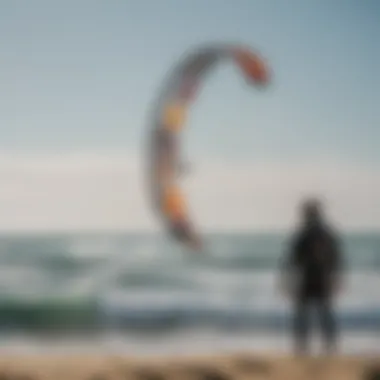
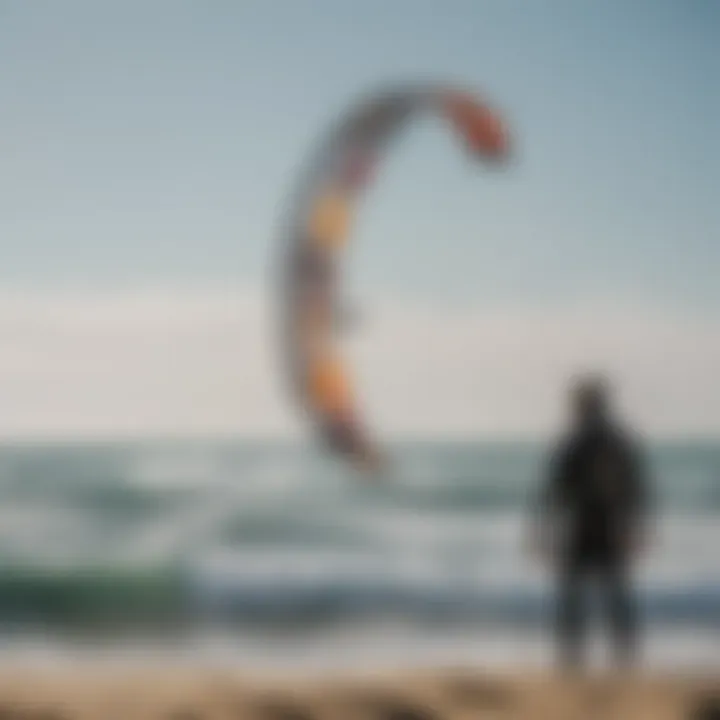
When it comes to choosing a wind measurement device, the purpose it serves stands out as a crucial consideration. Are you sailing competitively, or are you just out for a casual day on the water? Knowing your primary objective can guide you toward the right choice. For competitive sailors, accurate measurements can influence tactics and performance, while recreational users might prioritize ease of use and portability.
A device tailored for racing might offer advanced features like wind speed trends, whereas a simpler model may suffice for leisure activities. Think of the purpose as the backbone of your decision; the right one sets the stage for an enjoyable experience on the water.
Environment
Another key characteristic to consider is the environment in which you plan to use the device. Different watersports often take place under varying weather conditions and geographic settings. For instance, ocean sailing involves dealing with stronger and more unpredictable winds compared to lake sailing. Devices designed for coastal environments might feature more robust construction to handle waves and saltwater exposure. Choosing a product that matches the environmental conditions you expect can ensure its reliability and longevity. You wouldn't want to rely on a lightweight anemometer on a stormy day, after all.
Budget
Budget plays an undeniable role in your selection process. High-quality wind measurement devices can vary immensely in price. It's sensible to assess what you are willing to spend versus the features you need. A more expensive device may offer enhanced accuracy and durability, which can be worthwhile for avid watersport enthusiasts. However, those on a tighter budget can still find satisfactory options that deliver essential measurements without breaking the bank.
Device Comparisons
Pros and Cons of Each Type
When delving into pros and cons of each type, it's crucial to weigh the benefits and drawbacks of various devices. For example, mechanical anemometers may be more affordable and straightforward but often lack the precision of digital types. On the other hand, digital devices provide instant readings but can be affected by battery life or water conditions. Knowing these factors assists users in making informed decisions about what devices can best serve their needs. Each type carries unique features that suit different situations, and recognizing these can lead to more effective use on the water.
User Reviews and Recommendations
One valuable resource that shouldn’t be overlooked is user reviews and recommendations. These insights offer real-world perspectives that can highlight critical aspects of devices and their practical use. People's experiences can uncover unforeseen advantages or issues that specifications might not reveal. Whether you're browsing forums on Reddit or checking product reviews on Amazon, user feedback can guide you toward devices that perform well under specific conditions. It’s akin to getting the inside scoop from seasoned watersport enthusiasts who can steer you on the right path.
"Understanding the nuances of your equipment isn't just about enhancing your skills, it's about enjoying the journey each time you're on the water."
By carefully considering the purpose, environment, and budget, alongside scouring user reviews, watersport enthusiasts can make educated choices. Ultimately, the right device not only boosts performance but also contributes to a safer, more fulfilling experience.
Practical Applications in Watersports
Wind measurement devices play a pivotal role in the realm of watersports, empowering enthusiasts to make informed decisions based on accurate data. Unlike a simple gust of wind that might seem harmless, what lies beneath that surface can be deeply influential on the performance and enjoyment of activities such as sailing, surfing, and kiteboarding. By understanding how to interpret wind conditions through these measurement tools, participants can significantly enhance their experience while reducing risks associated with unpredictable weather.
Sailing Techniques
Sailing is fundamentally about harnessing wind power, making accurate wind measurement crucial for performance. For instance, understanding wind speed allows sailors to adjust their sails intelligently. If the wind is a tad brisker than anticipated, a sailor can reef their sails to maintain control and avoid capsizing. Similarly, the wind direction can dictate the best course to take; knowing how to pivot based on real-time data from an anemometer can mean the difference between a smooth sail and a sluggish trek against a headwind.
A practical application is the use of digital anemometers that provide instant readings, allowing sailors to react quickly. Recommendations often center around integrating these readings into training practices. For example, maintaining a log of various wind conditions and corresponding sail handling can prepare novice sailors for real-world scenarios. This commitment to adapting sailing techniques according to wind data not only fosters skill development but also builds a deeper respect for the forces at play.
Surfing Dynamics
For surfers, wind conditions influence waves, which are pivotal to the overall surfing experience. Wind works to shape waves, determining their quality and surfability. Knowledge of wind patterns, especially offshore winds, is critical. As events unfold on the water, surfers relying on real-time data from wind vanes can quickly ascertain the optimal conditions for riding.
Understanding this dynamic can also enhance safety. If surfers can identify signals like shifting wind patterns suggesting incoming storms, they can exit the water and avoid dangerous situations. The integration of weather apps feeding off wind data presents surfers a more nuanced grasp of surf dynamics, which is particularly crucial for those attempting more advanced tricks.
Kiteboarding Strategies
Kiteboarding, a sport thriving on wind, necessitates heightened awareness of conditions. Measurement devices allow kiteboarders to analyze not just wind speed but also gust variations, which can affect control and lift. For kiteboarders, realizing when gusts hit and how they interact with their kite type is essential.
Many experienced kiteboarders recommend customizing kite size based on predicted wind conditions obtained from an anemometer. For instance, using a larger kite during lighter winds can help maximize performance, while smaller kites are often preferable when the wind picks up.
By using mobile applications paired with measurement tools, kiteboarders are equipped to make smart choices on the fly. This proactive approach can be a game-changer, allowing them to focus on executing maneuvers rather than worrying about their safety.
Wind measurement can enhance performance, optimize safety, and tailor strategies in watersports.
Technological Advancements in Wind Measurement
Modern wind measurement technology is evolving swiftly, providing watersport enthusiasts with tools that not only enhance performance but also ensure safety on the water. As the landscape of aquatic sports grows increasingly competitive and sophisticated, these advancements place an emphasis on accuracy and user engagement. Newer devices are often compact, more affordable, and equipped with smart technology that appeals to both casual sailors and professional athletes alike. Being abreast of these developments can give one a distinct edge in both enjoyment and skill development in watersports.
Smart Devices


Integration with Mobile Apps
In today's digital world, the integration of wind measurement devices with mobile applications is like having a co-pilot on your journey. It allows users to access significant real-time data at their fingertips, making it easier to make split-second decisions when conditions change. Smart devices, such as those by WindAlert or Dwyer Instruments, can seamlessly connect to smartphones via Bluetooth, enabling enthusiasts to monitor conditions from a distance. This characteristic is particularly helpful on breezy days when retrieving a device physically could be impractical.
The unique feature of these apps is their user-friendly interface, displaying not just current wind conditions but also historical data and predictive analytics about changes in wind patterns. However, one downside can be the reliance on battery life; if your device runs out of juice, you may lose valuable functionality right when you need it the most.
Real-Time Data Analysis
Real-time data analysis is another critical advancement that transforms how wind conditions are perceived and reacted to in watersport activities. With devices capable of immediate data calculations, athletes can observe factors such as wind speed or direction and make adjustments to their sails, boards, or kites correspondingly.
The key appeal of real-time data analysis lies in its immediacy. For instance, a device like the Kestrel 5500 can deliver accurate readings rapidly, allowing sailors to adapt quickly. However, while this instantaneous feedback is invaluable, it can also overwhelm those who may not be accustomed to interpreting various data points quickly. The skill to process this information smoothly is often what separates amateur and professional performers in watersports.
Emerging Trends
IoT and Wind Measurement
The Internet of Things (IoT) is penetrating various sectors, and wind measurement is not left out in the cold. Devices equipped with IoT capabilities can collect and transmit data to remote servers, providing a broader analysis of wind conditions over time and geography. This advancement is beneficial as it helps compile data that can be invaluable for trend analysis in watersports.
A standout feature of IoT-enabled devices is their ability to communicate data across networks. This feature can transform a regular wind measurer into part of a larger ecosystem that tracks climatic changes in real-time. However, users must be vigilant regarding privacy and data security, especially when sharing personal info through connected devices.
Sustainability Considerations
As environmental issues take center stage worldwide, sustainability considerations in wind measurement devices are becoming paramount. More companies are focusing on creating eco-friendly materials that not only reduce our carbon footprint but also provide durability in challenging marine environments. Manufacturers are increasingly designing devices that are energy-efficient and recyclable, signaling a shift toward more responsible production practices.
One unique feature of these sustainable products is their capacity to minimize waste while maximizing functionality. For example, devices that run on solar energy reduce reliance on batteries, which can be wasteful. However, while striving for sustainability, tech developers must ensure that the performance of these devices does not decline, as watersport participants depend heavily on reliability for their safety and efficiency on the water.
Environmental Impact and Considerations
The role of wind measurement devices extends well beyond improving performance in watersports; they also hold significant implications for environmental stewardship. By exploring wind patterns and their interactions with the marine environment, enthusiasts can gain valuable insights into how human activities and winds affect ecosystems. The connected nature of wind, water, and wildlife makes understanding these dynamics not only beneficial for sportsmanship but also vital for conservation efforts.
Effects of Wind on Marine Ecosystems
Wind is a powerful force that shapes oceans, lakes, and rivers. Its effects on marine ecosystems are manifold. Here are some points to consider:
- Nutrient Distribution: Wind helps mix the water layers, pushing nutrients from the ocean floor to the surface. This is crucial for phytoplankton growth, which forms the foundation of the aquatic food chain.
- Habitat Alteration: Frequent winds can lead to the redistribution of sediments and shelter, affecting the habitats of species such as crab, oyster, and other benthic organisms.
- Weather Patterns: Wind influences local weather conditions, which in turn affects breeding patterns of fish and migratory birds. For instance, consistent winds can signal changes in temperature, impacting spawning cycles of various marine species.
The interrelationship between wind dynamics and marine life is delicate. Understanding wind flow around coastal regions, currents, and their eventual impact on nutrient cycles is crucial for protective measures. Enthusiasts can play a role in these efforts.
Wind Measurement for Conservation Efforts
Conservation in marine areas necessitates accurate data, and wind measurement devices are fundamental in this regard. The use of these technologies in conservation efforts can provide several benefits:
- Data-Driven Decisions: By measuring wind speed and direction, organizations can monitor environmental changes and better understand patterns in marine ecosystems. This data is invaluable in creating management plans.
- Habitat Protection: When high winds are detected, areas at risk for erosion or habitat loss can be closely monitored or temporarily closed to human activities, allowing nature to recover.
- Wildlife Conservation: Wind data can help track migratory patterns, ensuring the protection of key habitats for vulnerable species that might be affected by changes in wind conditions.
"It’s essential to see wind measurement not just as a tool for watersport performance, but as a means of safeguarding our ecological treasures."
Closure and Future Directions
As we draw this comprehensive guide to a close, it's crucial to reflect on the significance of wind measurement devices in the realm of watersports. Accurate wind measurements are not merely tools but are the foundation for effective performance and enhanced safety. Whether you're sailing on a serene lake, catching waves at the beach, or soaring high while kiteboarding, understanding the wind is key to mastering these activities. This section aims to encapsulate the essential elements discussed throughout the article and offers a glimpse into what the future holds for wind measurement technologies.
Review of Key Points
Throughout the guide, we’ve examined various dimensions of wind measurement devices, breaking down their types, functionalities, and their role in the performance of watersports. Here are some key takeaways:
- Importance of Wind Measurement: Accurate wind data is critical for decision-making, strategic planning, and overall safety in watersports.
- Types of Devices: We covered various instruments, such as anemometers, wind vanes, and pitot tubes, each with unique functionalities suited for different watersport environments.
- Principles of Measurement: Understanding the aerodynamics behind wind measurement, including device calibration and data interpretation, aids in using these tools effectively.
- Technological Advancements: The rise of smart devices and mobile app integrations is revolutionizing the way sports enthusiasts access and utilize wind data.
- Environmental Considerations: Responsible wind measurement can contribute to conservation efforts and provide insights into the health of marine ecosystems.
Reflecting on these points can inspire watersport enthusiasts to leverage wind measurements more effectively, leading to better individual experiences and environmental stewardship.
Predictions for Future Developments
Looking ahead, advancements in technology and our understanding of environmental impacts will likely shape the future landscape of wind measurement devices in watersports. Here are some anticipated developments to keep an eye on:
- Increased Integration with IoT: The burgeoning Internet of Things may lead to fully connected wind measurement systems that not only report conditions but also learn from data patterns over time, tailoring suggestions for users based on real-time observations.
- Enhanced Durability and Accuracy: Future devices are expected to be more robust and capable of yielding even more accurate readings, such as the introduction of advanced materials that withstand extreme conditions often found in watersport-heavy areas.
- User-Centric Designs: A greater emphasis on the user experience can emerge, leading to devices that are both intuitively understandable and aesthetically appealing, making them more accessible for novices and seasoned enthusiasts alike.
- Environmental Awareness Tools: As the conversation around environmental conservation grows louder, wind measurement devices may evolve to include features that monitor and report on marine health, contributing to scientific research and promoting sustainable practices among users.







